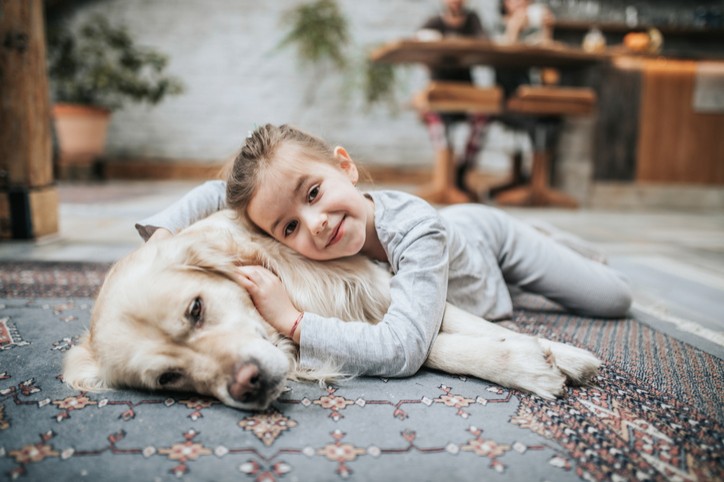There are a lot of wonderful reasons for a child to have furry companion. Having one can help a child learn to show compassion for a pet at an early age. Caring for a pet teaches responsibility, how to plan and is a good for social development, all important in forming the kind of person they will grow up to be.
Kids and pets make great friends and can form special bonds. Parents can help this happen by making sure kids and pets are safe when they are together. Thousands of children are injured or worse by family pets every year, leading to millions of abandoned or surrendered pets sitting in shelters. Often an animal will be euthanized for biting. Thousands of animals are also neglected, injured or killed every year. Such events can be avoided with clear boundaries and rules for the pet and child.

Safety first
When it comes to pets, it is essential that children remain calm. This means no jumping and screaming to get a pet’s attention, as this is annoying and stressful for a pet. Pulling tails, yanking paws and sneaking up behind pets can lead to your child being nipped at or bitten. Never allow kids to corner a pet or roughly handle them. This can cause pets to go on the defense or may make them always want to hide.
Supervision
Young kids are notoriously playfully rough with pets. For this reason alone, parents and guardians should never leave small children alone with pets (dogs, cats, birds, etc.) no matter how well behaved the animals appear to be.
Let’s get physical, but not too physical
Except for a few large, equestrian animals, do not let children climb on or ride on the backs of any pet. Pinching, punching, kicking and slapping should be corrected immediately. That goes the other way too - never let your pet bite or scratch your child.
Dog Training
There are dog behavior classes available that specifically teach pets how to be around small children. Better yet, find a training program that will involve children in the training process. Your local humane society or shelter will have information on behavior classes in your area.
When trying to decide if a pet is right for your family, consider some of the following;
The cost. Can you afford to care for your pet? For example, housing, socialization, exercise, grooming and veterinary care. Make sure your family can afford and is willing to provide for them.
Scheduling. How long will you or members of your family be away from a pet? Some furry companions need extra exercise or feeding and may not be a good choice for families who spend a lot of time away from home.
The commitment. You and your family are making a commitment to a pet for their life, so consider what you will do with your pet if life situations occur and changes happen.
Attention. Are you able to provide the amount of attention your pet will need?
Additional Resources